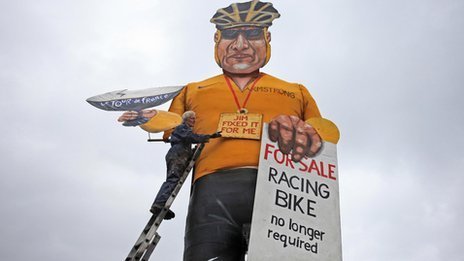What do you think?
Rate this book


Over the course of two years, Coyle conducted more than two hundred hours of interviews with Hamilton and spoke candidly with numerous teammates, rivals, and friends. The result is an explosive book that takes us, for the first time, deep inside a shadowy, fascinating, and surreal world of unscrupulous doctors, anything-goes team directors, and athletes so relentlessly driven to succeed that they would do anything—and take any risk, physical, mental, or moral—to gain the edge they need to win.
Tyler Hamilton was once one of the world’s best-liked and top-ranked cyclists—a fierce competitor renowned among his peers for his uncanny endurance and epic tolerance for pain. In the 2003 Tour de France, he finished fourth despite breaking his collarbone in the early stages—and grinding eleven of his teeth down to the nerves along the way. He started his career with the U.S. Postal Service team in the 1990s and quickly rose to become Lance Armstrong’s most trusted lieutenant, and a member of his inner circle. For the first three of Armstrong’s record seven Tour de France victories, Hamilton was by Armstrong’s side, clearing his way. But just weeks after Hamilton reached his own personal pinnacle—winning the gold medal at the 2004 Olympics—his career came to a sudden, ignominious end: He was found guilty of doping and exiled from the sport.
From the exhilaration of his early, naïve days in the peloton, Hamilton chronicles his ascent to the uppermost reaches of this unforgiving sport. In the mid-1990s, the advent of a powerful new blood-boosting drug called EPO reshaped the world of cycling, and a relentless, win-at-any-cost ethos took root. Its psychological toll would drive many of the sport’s top performers to substance abuse, depression, even suicide. For the first time ever, Hamilton recounts his own battle with clinical depression, speaks frankly about the agonizing choices that go along with the decision to compete at a world-class level, and tells the story of his complicated relationship with Lance Armstrong.
A journey into the heart of a never-before-seen world, The Secret Race is a riveting, courageous act of witness from a man who is as determined to reveal the hard truth about his sport as he once was to win the Tour de France.
290 pages, Hardcover
First published September 1, 2012




After the race, I felt a new level of frustration as I watched the white bags get handed out.
Here's an interesting number: one thousand days. It's roughly the number of days between the day I became professional and the day I doped for the first time.
What does being on EPO feel like? It feels great, mostly because it doesn't feel like anything at all.
During my career, journalists often used the term "arms race" to describe the relationship between the drug testers and the athletes, but that wasn't quite right, because it implied that the testers had a chance of winning.
I got to where I could estimate my hematocrit level by the color of my blood.
To win the Tour, you needed only three qualities.
Was it possible to win a professional bike race clean during this era? Could a clean rider compete with riders on Edgar?
The answer is, it depends.
This was the moment, the fork in the road. Everyone who gets popped experiences it:
The winning time up Alpe d'Huez in the 2011 Tour was 41:21; back in 2001, a rider would have finished 40th.